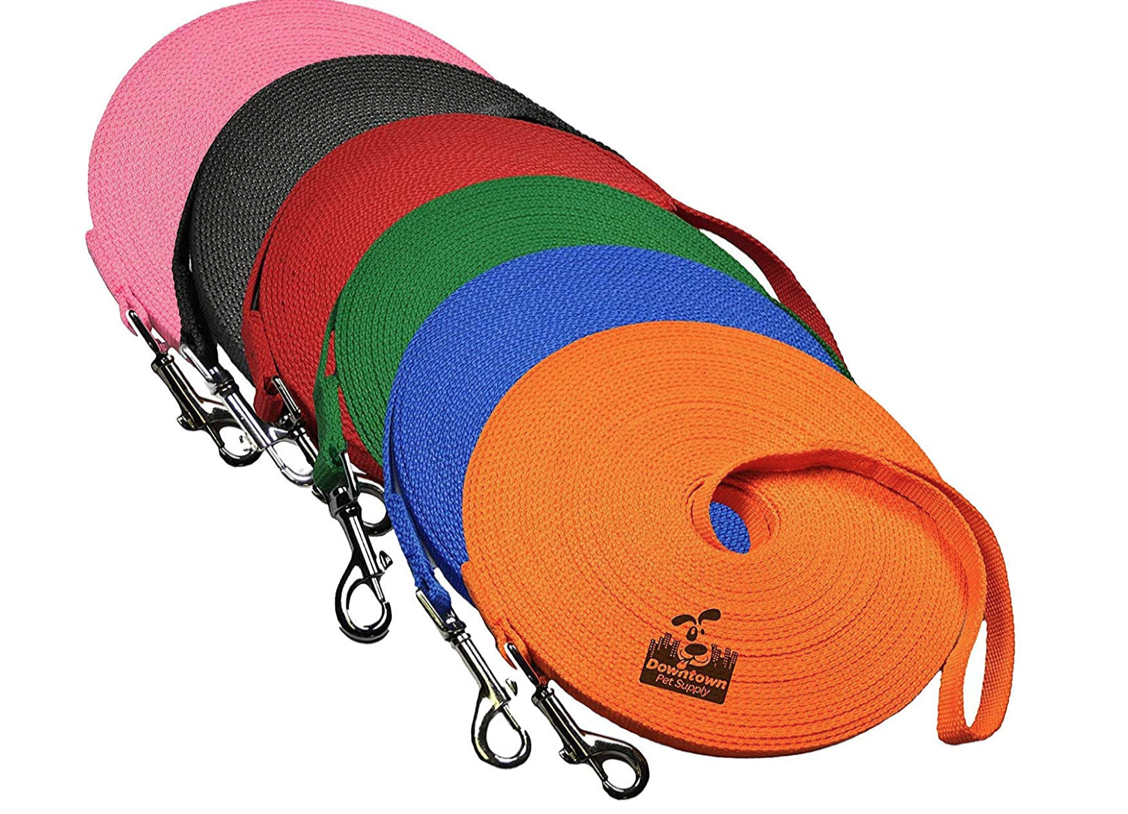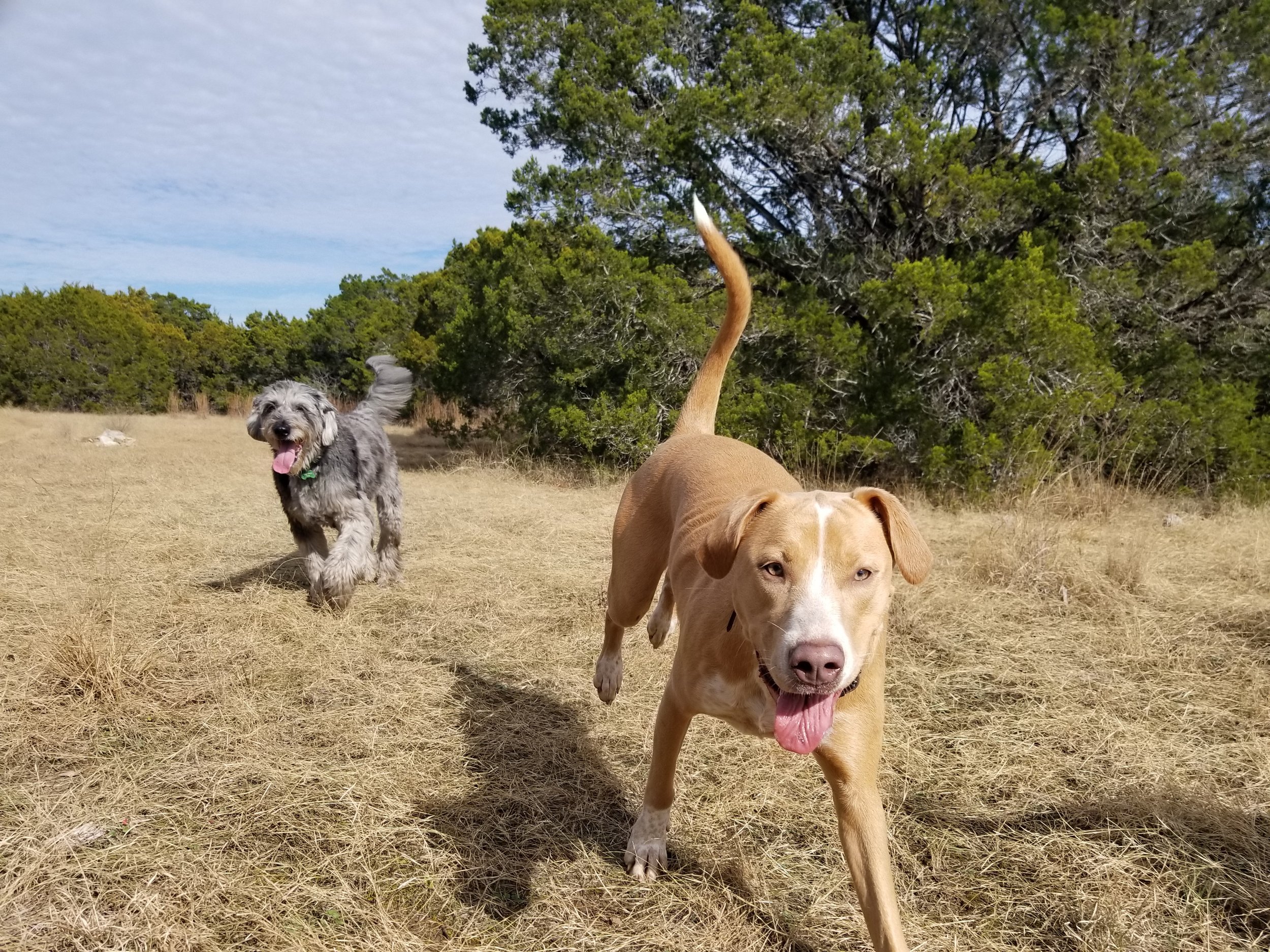How to build a solid recall command: teaching your dog 'come'
The ‘come’ command is one of the most important things we can teach our dogs. Having a solid ‘come’ can help you keep your dog safe as well as open the door to a world of fun activities. A solid ‘come’ takes work and is one of the most difficult commands, and therefore we use treats for it - really good treats.
Since ‘come’ is so important, it warrants the use of hot dogs! Hot dogs, the top of the dog treat pyramid, the best thing you can give a dog. For this extra important command, we are sending you to the grocery store. Buy a package of hot dogs and a box of sandwich bags. At home, slice each hot dog lengthwise, then chop them into tiny bits no bigger than the tip of your pinky finger. We want your dog to enjoy the taste, but be able to get it down with just two chomps. Put about 5-10 pieces in each sandwich bag and put them in the freezer. You want to take one bag out a day for your practice sessions. In order to preserve the sanctity of the hot dog, don’t use these treats for anything else. These are ‘come’ treats only.
Add a stop at Home Depot to your shopping trip because you also need a light 30’ rope and a clip. You can clip or tie the rope directly on to the collar or on to the handle of your Mendota Slip Lead, because this process begins with a nice calm exit from your house and a few minutes of focused loose leash walking.
You want to get to a nice quiet grassy area near where you live. Your yard is a good place to start practicing, but it’s a good idea to take the show on the road after a few sessions and go somewhere with new smells and more distractions. Don’t worry! You have the rope to keep your dog safe and the hot dog to keep their attention.
Wait for your dog to get interested in the environment. Once your pup figures out that hot dog is not being dished out for free they will make the most of the moment and start sniffing around. When your dog gets slightly distracted and into a groove (not too distracted mind you, we are looking for wins, especially at first) say ”DogComeCome!!” in the happiest, highest voice you can muster. You want it to all sound like one word to avoid the common mistake of pausing between saying your dog’s name and the command. You can also bend down, tapping your knees, and opening your hands to your dog as they run towards you. Just don’t squat so low that your butt rests on your heel just in case your dog doesn’t come and you need to back up!
‘Come’ should be THE BEST! Happy voice, happy energy, happy hot dogs! Coming to me should be the best feeling in the world. When your dog comes, they should get a ‘good dog, good dog, who is such a good dog’, a hot dog chuck, and a scratch. After that, stand up and walk a few steps together until they start to sniff again. You don’t want to make your reward so exciting that they get drunk on reward energy, and start bombing away from you at warp speed, but you also don’t want them to feel like the fun is ending.
It’s not ‘come’ unless you can touch your dog. It’s important that when your dog comes to you, that you reach down to touch them around the head or neck. Do this 9/10 times so that your dog starts to learn that the post ‘come’ touch is a temporary scratch and not you reaching to grab them and take their freedom away. This way when you do need to grab your dog they don’t slip away from your hand. This slip can be a truly dangerous move - if it happens at all, even rarely, that means it could happen at the absolute wrong time, but it also speaks to what I call an attitude problem. Where your dog has determined that you are trying to grab them and, because they don’t want to be grabbed, they evade your hand. Hopefully if you are at the stage of training where you are doing off-leash prep, you have already addressed that kind of thinking. If I do have a hand shy dog, I make sure to touch them extra until they learn to tolerate it.
Keep it interesting! Your baggie only has 5-10 chucks of hot dog because you only want to practice this a few times each session. To begin set up some wins while your dog learns what ‘come’ is and how fun it can be! You want your dog to get far enough away to where they can run back to you, but not so far and so distracted that the ‘come’ fails and you need to use the rope to reel them in. If your dog misses a ‘come,’ take a break and do some loose leash walking. If they miss two, maybe it’s time to quit for the day and try again tomorrow - after all, only dogs who come when called get to stay at the park.
Wean off the treats: As you build on the reliability of the command, practicing it at longer intervals and with more distractions, your dog may get a treat for every other ‘come,’ then three out of five, then one out of ten.
What do you do if something goes wrong? Let’s say you belt out your most charming “come come!” and your dog doesn’t even perk an ear. Keep calling their name and the ‘come’ command at different pitches and volumes. Give a touch/release on the rope. Clap your hands and leap around trying to make yourself interesting enough to warrant a response. As you say ‘come,’ back up, almost jogging backwards as you call your dog to make it more fun for your dog to run to you. If all that fails and your dog is completely unconcerned with your movements or hollering, reel him in using the rope. First, do a tiny touch on the rope, winding it up and taking out the slack. I wait a beat to see if that was enough to get your dog’s attention, then give a heavier tug. Again, watch your dog. Are they engaged yet or do they ignore you? After that, apply pulsing pressure (touch/release) through the rope as you call your dog and start moving backwards while still calling them. The moment your dog makes the decision to stop being dragged and start moving towards you, reward them with a verbal ‘yes!’ and ‘good!” but don’t use a treat for this round. Hot dogs are only for dogs who come of their own volition.
Overall, ‘come’ should be a romping good time while still being calm and mentally engaged. You want ‘come’ to be the happiest moment of your dog’s day. You can practice twice a day or once every other day, but try to be consistent. Any treat-based training is all about repetition. You gotta put the hours in to get an ingrained response. Practicing good rules and boundaries at home will support your work in the field - don’t forget that everything is connected!


